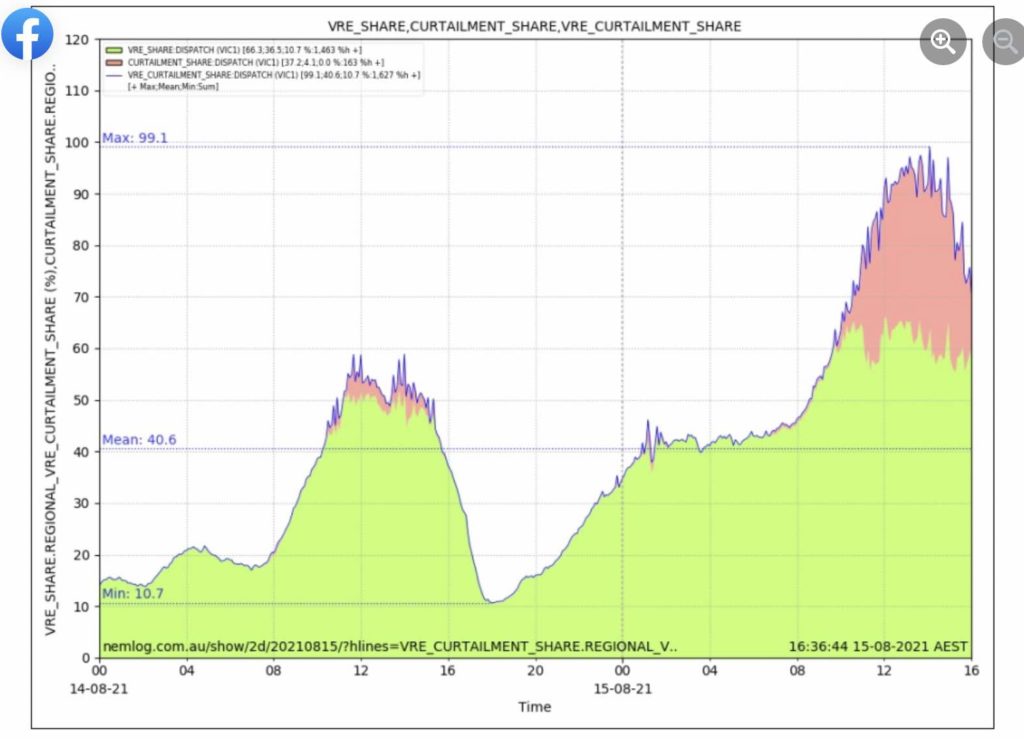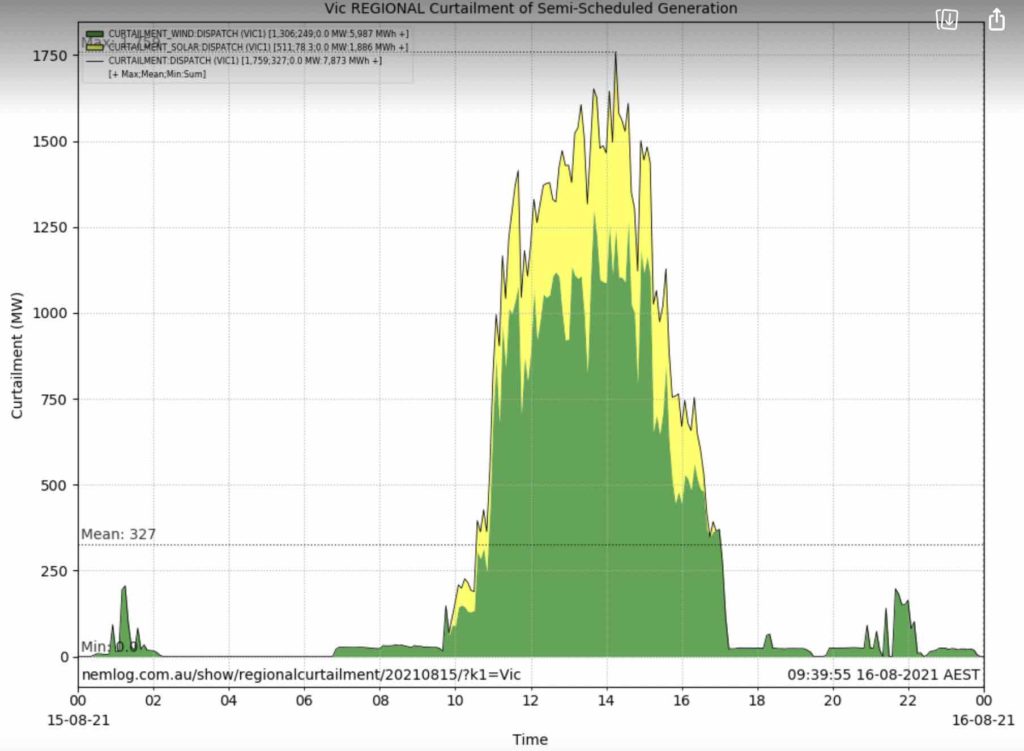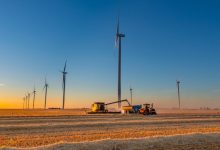Daniel Westerman, the new head of the Australian Energy Market Operator, wants to get the Australian grid ready for the occasions it will need to accommodate 100 per cent penetration of wind and solar.
Westerman says he needs that to be in place by 2025, and on Sunday we got more insight into just how urgent it is when the amount of available wind and solar generation in Victoria was enough to meet more than 99 per cent of the state’s demand.
And it might well have done so if it weren’t for the mostly voluntary curtailment by a whole host of wind and solar farms that decided to scale back production as wholesale electricity prices fell below zero.
Energy analyst Geoff Eldridge, who runs the data-based NEMlog website, says the combined total of wind and solar generation, and the amount of wind and solar “constrained off” totalled 99.1 per cent of Victorian demand at 2.05pm on Sunday (August 15).
That’s a new record for the state, by a big margin. Eldridge says that the previous record was 80.3 per cent on Saturday, October 3, last year.
The amount that was actually delivered to the grid from wind and solar at that time – 66.3 per cent of demand – was impressive enough, but not actually a record share.

According to Eldridge, it was the fourth highest, trailing the record 70.3 per cent on Saturday, April 3 this year.
(Yes, such records are usually set on weekends! We should also point out that this was not a share of total local production, but of local demand. Production was higher because Victoria was exporting at the time).
These records are likely to continue to fall as more wind and solar farms join the grid, including the long delayed 530MW Stockyard Hill wind farm near Bendigo, which is currently operating at a cap of just 30MW as it works its way through the commissioning process.
There are also a host of new battery storage projects in the state – three operating, one in commissioning, and another half dozen queuing to join, which will help change the profile of electricity generation in the state, and create more demand when it is otherwise low.
Eldridge says demand was relatively low on Sunday in Victoria, and rooftop PV was mopping up nearly one third of that demand, reducing the pie available to the large scale wind and solar installations and the legacy fossil fuel generators.
Brown coal units were operating only at around 55-60 per cent of their capacity, highlighting the “new flexibility” that will be required of these installations, and prices fell below zero from around 10.30am to 6pm. The prices hit a low of minus 156/MWh during the day.

We can’t say just now exactly what happened on Sunday without access to the detailed bidding data, but in general terms wind and solar farms that don’t want to generate when prices go negative bid their offer prices high to ensure they are not dispatched.
In this case, one third of available capacity decided to curtail their output.
On the other side of the bidding spectrum, fossil fuel generators that want to ensure they are dispatched and don’t get switched off bid the prices into negative territory to get to the front of the dispatch queue. (Just as they often do after engineering a short price spike in times of peak demand).










